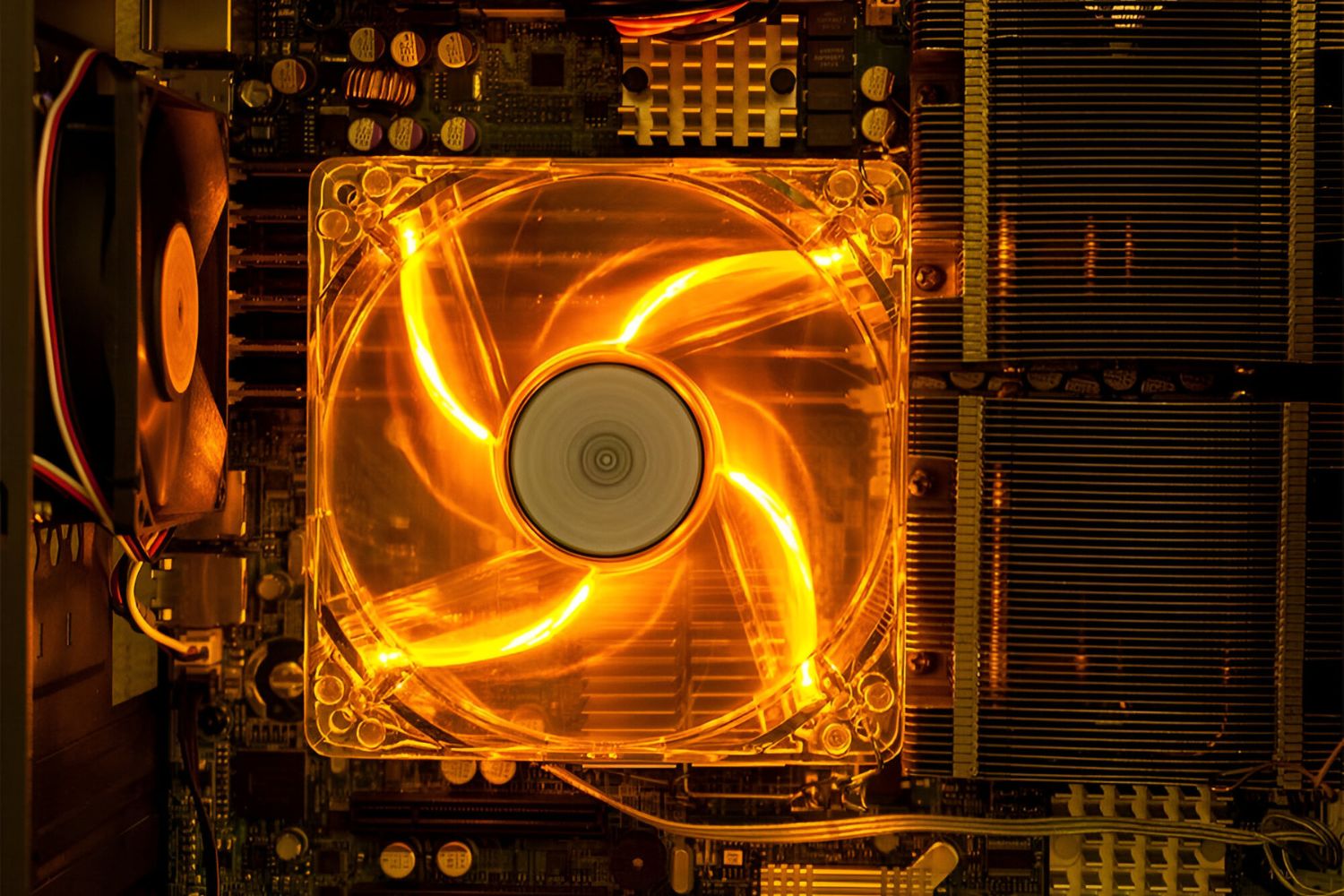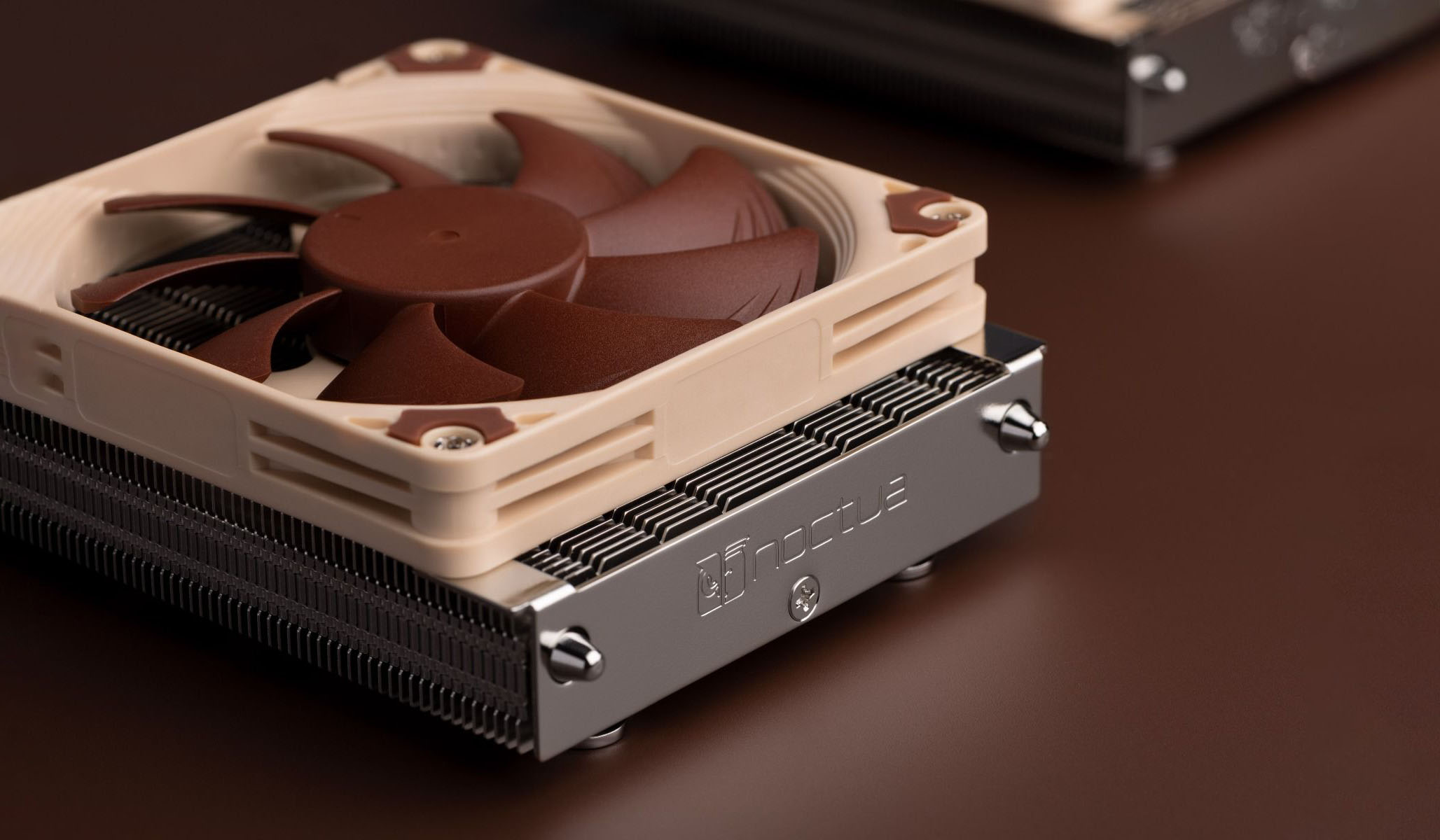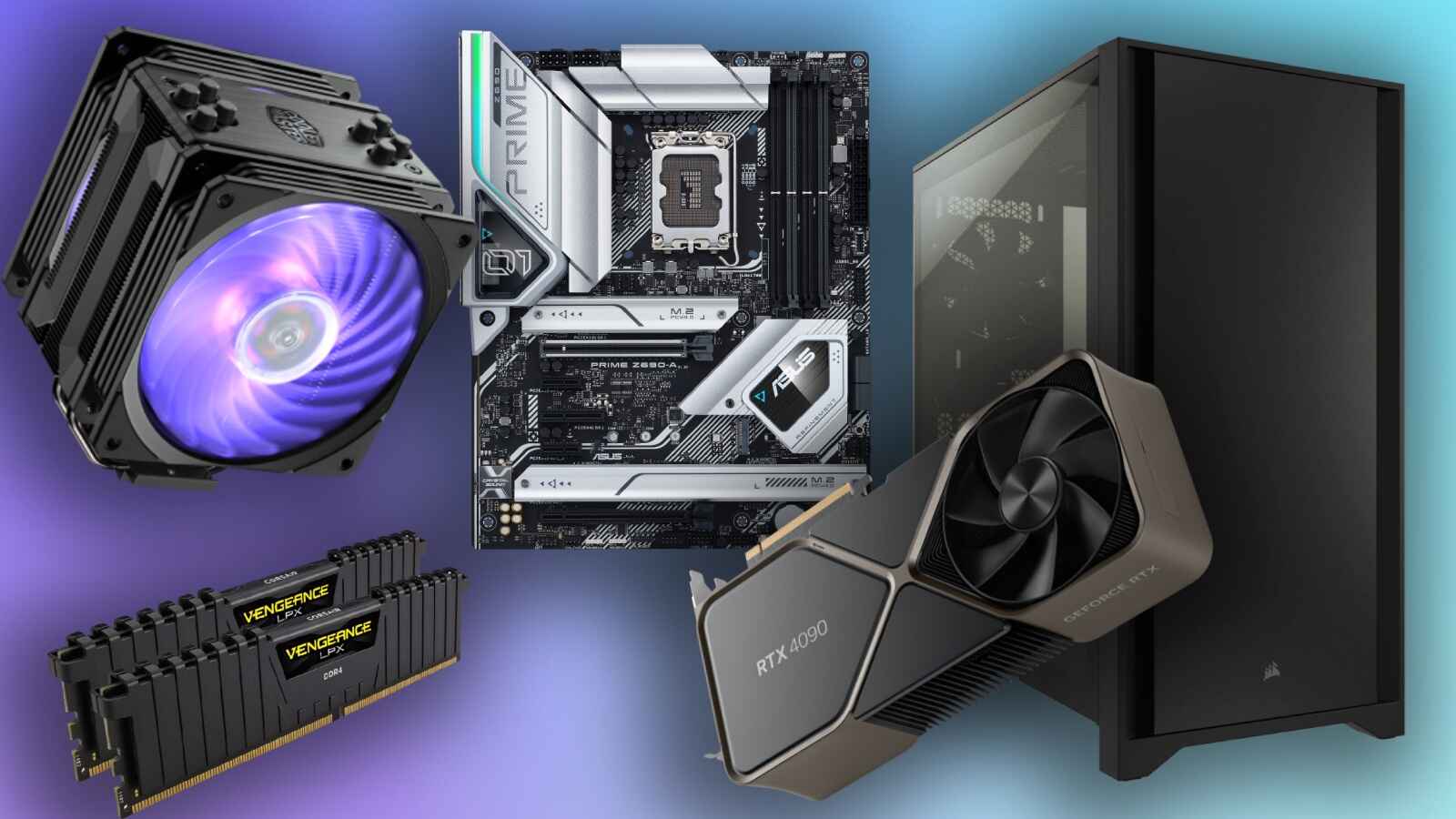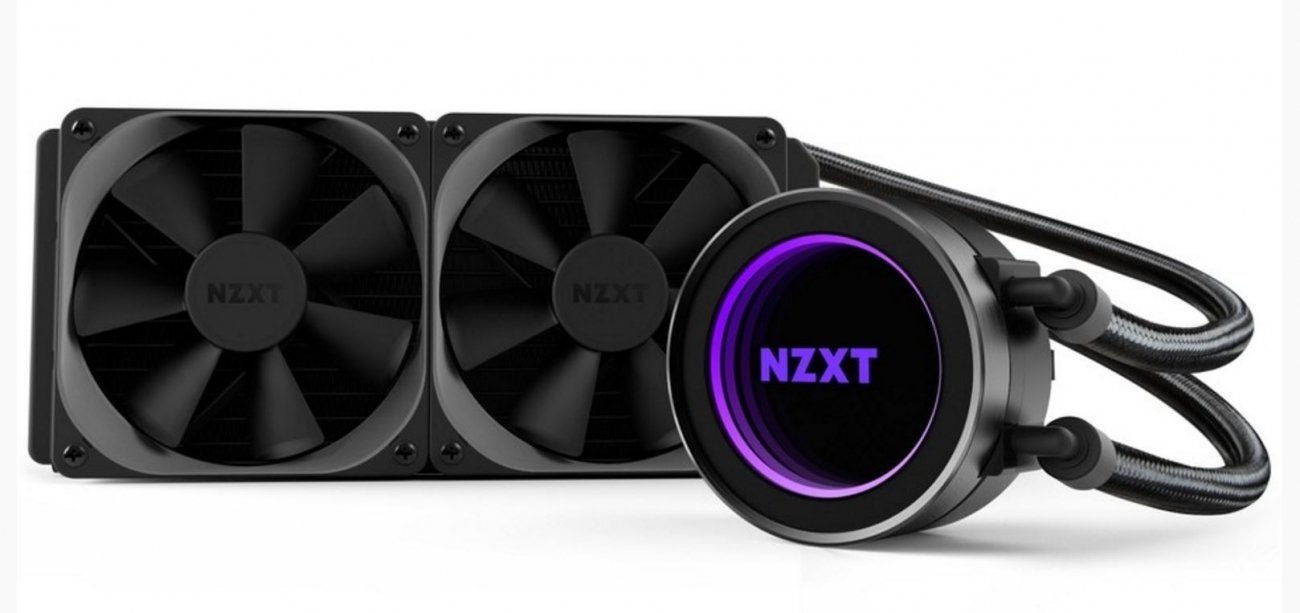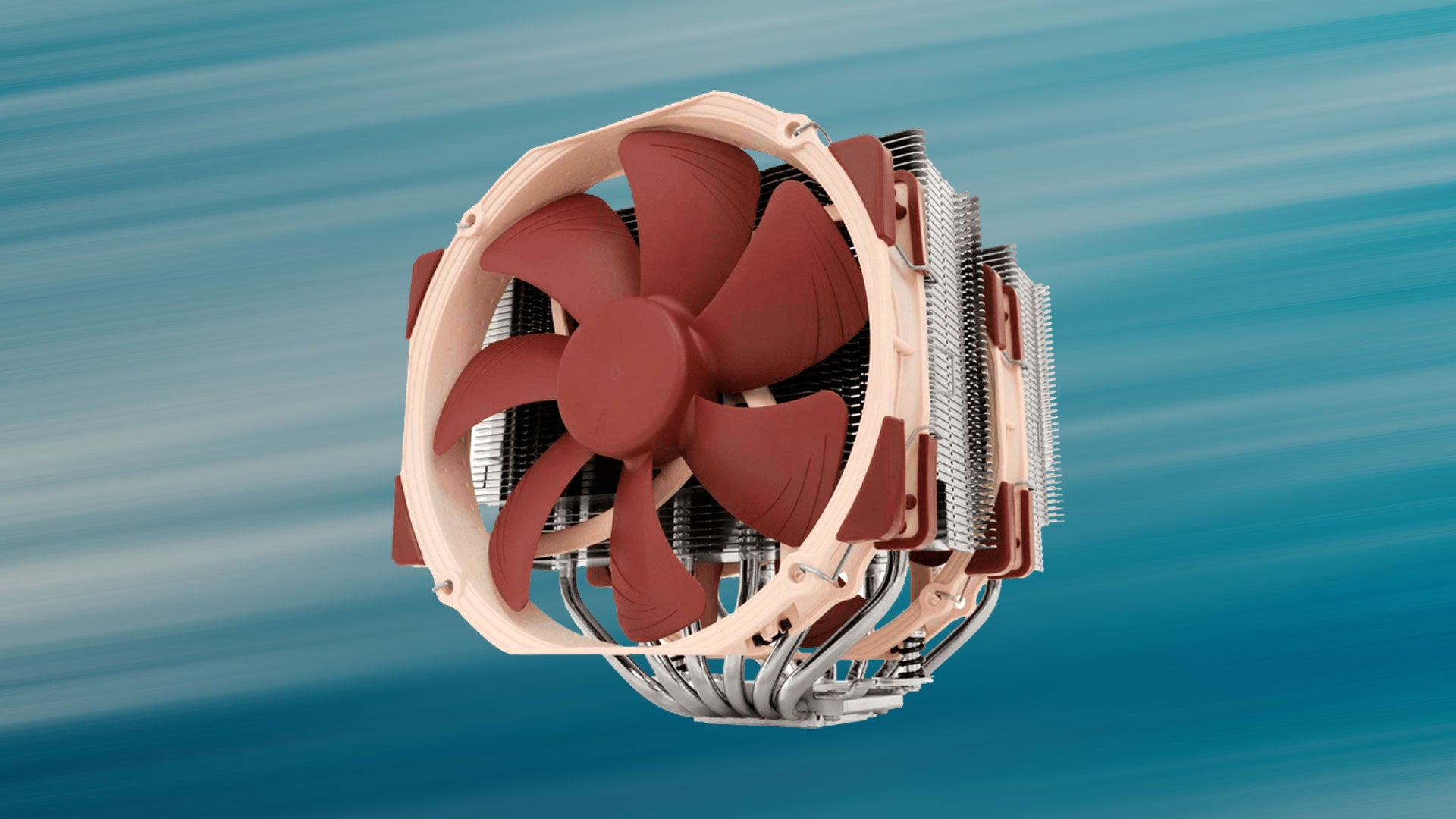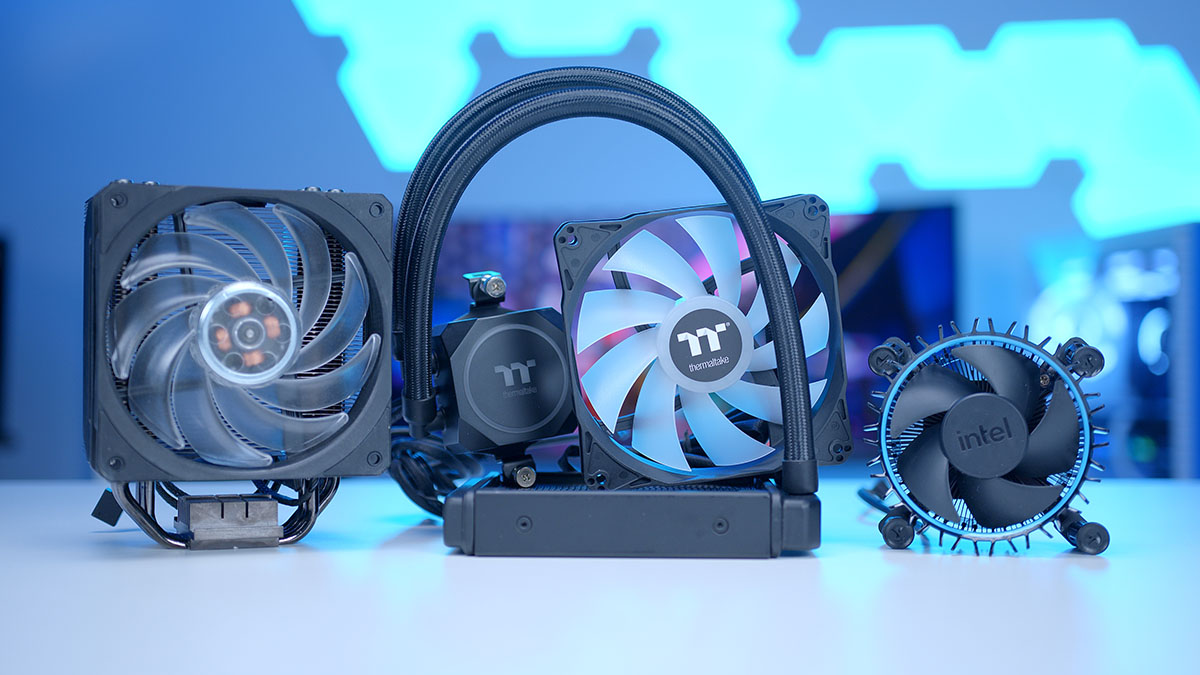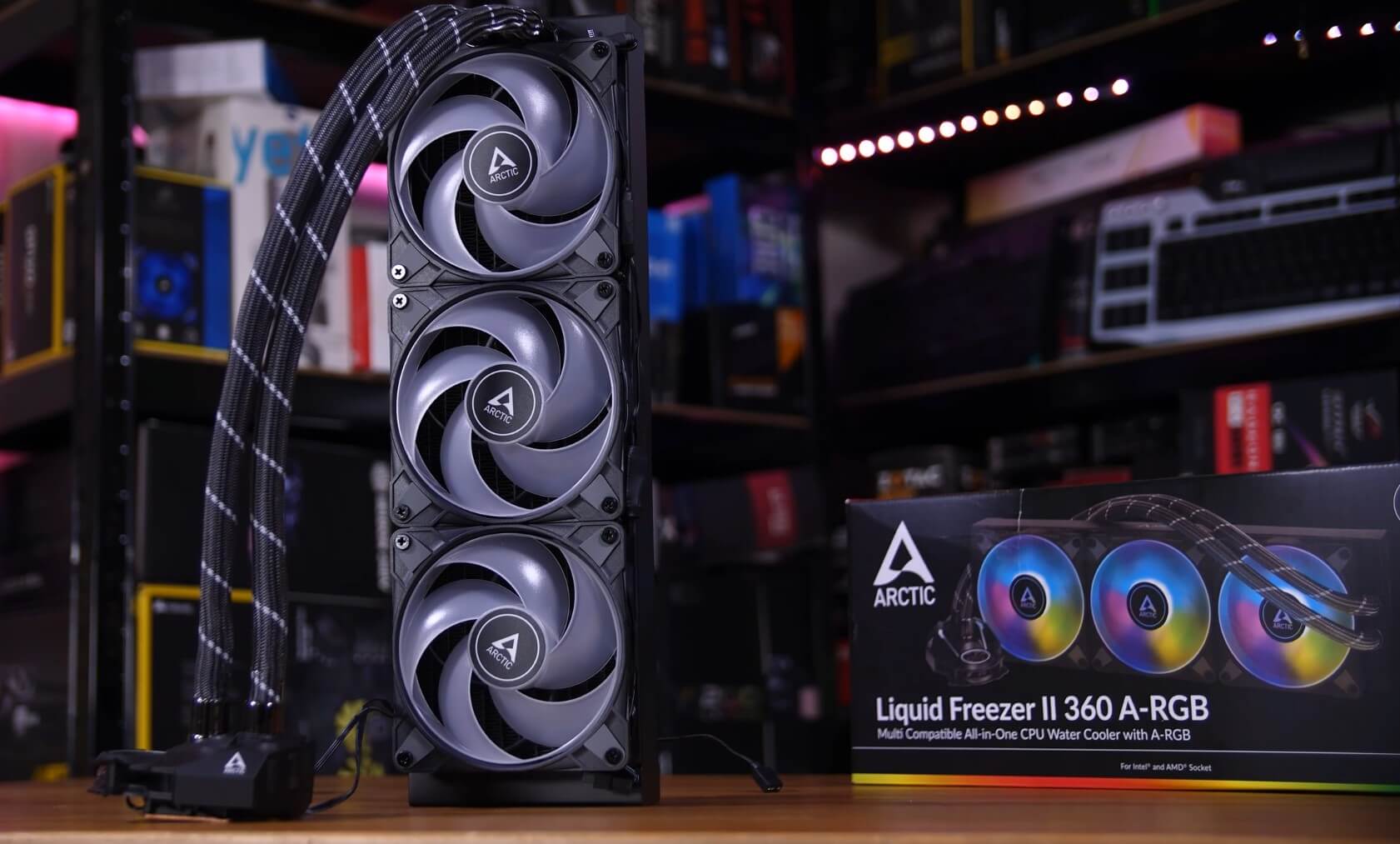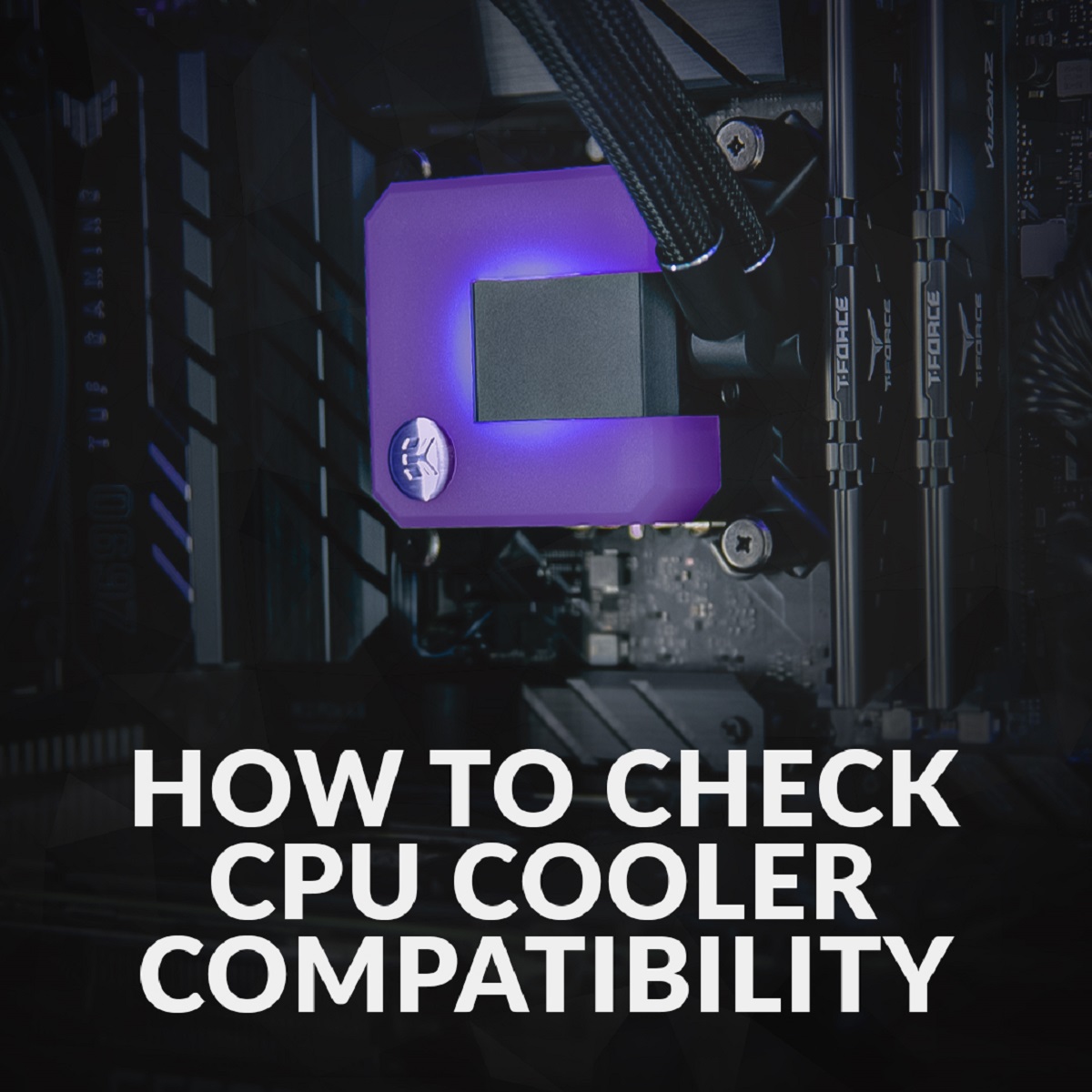Introduction
Keeping your computer running smoothly and efficiently is essential, especially if you frequently engage in resource-intensive tasks like gaming, video editing, or running complex software applications. One of the integral components of a computer system is the CPU (Central Processing Unit), which is responsible for carrying out all the necessary calculations and processing that enables your computer to perform various tasks.
However, with all the processing power comes heat generation. CPUs can get extremely hot during operation, and if not adequately cooled, they can overheat and even sustain permanent damage. This is where a CPU cooler comes into play. A CPU cooler is a crucial component that ensures the temperature of your CPU remains within safe limits, allowing it to function optimally.
To understand the importance of a CPU cooler, it’s crucial to grasp the impact of excessive heat on your computer’s performance. When a CPU gets too hot, it can throttle its speed to prevent overheating, causing a significant decrease in performance. In extreme cases, it might even shut down your system abruptly to prevent irreversible damage. Proper cooling ensures that your CPU remains at an ideal temperature, allowing it to run at its full potential without any hindrances.
In this article, we will explore the various types of CPU coolers available and discuss their pros and cons. We will also delve into the factors to consider when choosing the right CPU cooler for your system. Additionally, we will provide guidance on how to install and maintain a CPU cooler. Whether you are a computer enthusiast, avid gamer, or simply someone who wants to keep their computer running smoothly, understanding CPU cooling is paramount.
Definition: What is a CPU Cooler?
A CPU cooler is a vital component of a computer system that helps manage the temperature of the Central Processing Unit (CPU). It is designed to dissipate the heat generated by the CPU during operation, preventing it from overheating and ensuring optimal performance.
The CPU generates heat as a natural byproduct of the electrical current flowing through its transistors. The faster and more intensively the CPU is used, the more heat it produces. Without proper cooling, this heat can accumulate, causing the CPU’s temperature to rise to dangerous levels that can significantly impact its functionality and lifespan.
A CPU cooler primarily consists of a heatsink, a fan or fans, and thermal compounds. The heatsink is a component that effectively absorbs and disperses heat away from the CPU, while the fan(s) facilitate the airflow around the heatsink, accelerating the cooling process. Thermal compounds are applied between the CPU and the heatsink to enhance heat transfer.
CPU coolers work on the principle of heat transfer. As the CPU heats up, the heat is conducted through the metal baseplate and transferred to the heatsink. The heatsink’s large surface area and metal fins enable efficient heat dissipation, allowing the heat to be carried away by the passing air. The fan(s) assist in this process by directing airflow over the heatsink, expelling the accumulated heat out of the computer case.
The efficiency of a CPU cooler is determined by various factors, including its design, size, number and speed of fans, and the quality of thermal compounds used. Different CPU coolers cater to different thermal requirements, with some suitable for lower-powered CPUs and others specifically designed to handle the high heat output of overclocked or high-end processors.
It is important to note that CPU coolers are not universal and must be compatible with the specific CPU socket of the motherboard. Different CPU sockets have different mounting mechanisms, so it is crucial to choose a cooler that matches your motherboard’s socket type.
Overall, a CPU cooler plays a critical role in maintaining the longevity and performance of your computer system by effectively managing the CPU’s temperature. By keeping the CPU cool, it ensures stability during demanding tasks and safeguards against potential hardware failures stemming from overheating.
Importance of CPU Cooling
Effective CPU cooling is of utmost importance for the performance and lifespan of your computer system. It helps maintain a stable operating temperature for the CPU, preventing it from overheating and potentially causing irreparable damage. Let’s explore the significance of CPU cooling in more detail.
- Optimal Performance: CPUs are designed to operate within specific temperature ranges. When the CPU temperature exceeds safe limits, it can lead to thermal throttling, a mechanism that automatically reduces the CPU’s clock speed to lower heat output. This throttling significantly impacts performance, resulting in slower and less efficient computing. By keeping the CPU cool, a CPU cooler ensures that the processor can maintain its full speed and deliver optimal performance.
- System Stability: Overheating can cause system instability and crashes, particularly during resource-intensive tasks like gaming or 3D rendering. When the CPU gets too hot, it can lead to unexpected shutdowns, interrupting your work or gaming session. CPU cooling helps prevent such occurrences, allowing you to use your computer for extended periods without interruptions caused by overheating.
- Extended Lifespan: Excessive heat is one of the main factors that can significantly shorten the lifespan of a CPU. Prolonged exposure to high temperatures can degrade the CPU’s internal components and even lead to irreversible damage. A CPU cooler, by actively dissipating heat, helps maintain the CPU’s temperature within safe limits, prolonging its lifespan and protecting your investment.
- Protecting Other Components: The heat generated by the CPU doesn’t remain confined to the processor itself. It can affect other nearby components, such as the motherboard, memory modules, and graphics card. An efficient CPU cooler keeps the surrounding components cool as well, reducing the risk of damage due to excessive heat exposure.
- Overclocking Potential: Overclocking, the process of running a CPU at higher speeds than its default specifications, can provide a performance boost. However, it also generates more heat. Proper CPU cooling is crucial for overclockers as it helps dissipate the increased heat and prevents potential damage to the CPU and other system components.
In essence, CPU cooling is not just a luxury but a necessity for any computer system. It ensures optimal performance, system stability, and an extended lifespan for your CPU and other crucial components. Whether you are a casual user or a gaming enthusiast, investing in a reliable CPU cooler is essential for maintaining the health and longevity of your computer system.
How Does CPU Cooling Work?
CPU cooling systems play a vital role in maintaining the temperature of the Central Processing Unit (CPU) within safe operating limits. They employ various mechanisms to effectively dissipate the heat generated by the CPU during operation. Let’s explore how CPU cooling works in detail.
The primary objective of a CPU cooler is to transfer the heat away from the CPU and disperse it into the surrounding environment. This process involves multiple components working together to ensure efficient heat dissipation and airflow.
The key component of any CPU cooling system is the heatsink. It is typically made of metal, such as aluminum or copper, which has excellent thermal conductivity. The heatsink is designed with a large surface area and numerous fin-like structures to increase its ability to absorb and dissipate heat.
To enhance heat transfer, a thermal interface material, such as thermal paste or thermal pads, is applied between the CPU and the base of the heatsink. This material fills in any microscopic gaps or imperfections and improves thermal conductivity, allowing for better heat transfer from the CPU to the heatsink.
In air cooling systems, which are the most common type of CPU coolers, a fan or multiple fans are attached to the heatsink. These fans help in promoting airflow over the fins of the heatsink, which facilitates the transfer of heat from the heatsink to the surrounding air.
As the CPU operates and generates heat, the thermal energy is conducted through the base of the heatsink and into its fins. The large surface area of the fins enables efficient heat dissipation, effectively cooling down the CPU. The fans then blow cool air over the fins, which helps carry away the heat accumulated in the heatsink. This constant circulation of cooler air prevents the CPU from overheating.
In addition to the heatsink and fans, some CPU cooling systems also incorporate heat pipes. Heat pipes are hollow copper tubes that contain a small amount of fluid, typically a combination of water and special additives. As the CPU heats up, the heat energy vaporizes the fluid inside the heat pipes. The vapor rises to the cooler parts of the heat pipes and condenses, releasing the heat. The condensed fluid then returns to the hot areas of the heat pipes, repeating the cycle. This process helps to transfer heat more efficiently from the CPU to the heatsink.
It’s worth noting that there are also liquid cooling systems available for CPUs. Instead of using air, these systems use a closed-loop or custom loop arrangement with a liquid coolant, typically a combination of water and additives. Liquid coolers employ a pump to circulate the coolant through a series of tubes and a radiator, ensuring efficient heat dissipation. However, liquid cooling systems tend to be more complex and expensive compared to air cooling systems.
Overall, CPU cooling systems, whether air or liquid-based, work by utilizing the principles of heat transfer and convection to maintain the temperature of the CPU within safe limits. By effectively dissipating the heat generated by the CPU, these systems ensure optimal performance, stability, and longevity for your computer system.
Types of CPU Coolers
When it comes to CPU cooling, there are two main types of coolers: air coolers and liquid coolers. Each type has its own unique characteristics, advantages, and disadvantages. Let’s explore these CPU cooler types in more detail.
Air Coolers
Air coolers, also known as heatsink and fan (HSF) coolers, are the most common and widely used type of CPU coolers. They consist of a heatsink, which is typically made of aluminum or copper, and one or more fans attached to the heatsink.
The heatsink’s primary purpose is to absorb and disperse the heat generated by the CPU. Its large surface area, achieved through an array of fins or copper pipes, maximizes the contact area with the surrounding air, promoting efficient heat dissipation.
The fans in air coolers are responsible for creating airflow that carries away the heat from the heatsink. By blowing cool air over the fins, the fans help in rapidly dissipating the accumulated heat, ensuring the CPU maintains a safe operating temperature.
Air coolers are known for their reliability, simplicity, and cost-effectiveness. They are easy to install and require minimal maintenance. Additionally, they tend to provide sufficient cooling performance for most standard CPUs, making them a popular choice for casual users and budget-conscious individuals.
Liquid Coolers
Liquid coolers, also referred to as closed-loop coolers, are an alternative type of CPU cooling solution. They use a combination of liquid coolant, a pump, tubes, and a radiator to dissipate heat.
In a closed-loop liquid cooling system, the liquid coolant circulates through a sealed loop. The pump pushes the coolant through tubes to the CPU block, where it absorbs the heat from the CPU. The heated liquid then flows to the radiator, where it cools down as air passes through the radiator fins. Finally, the cooled liquid returns to the CPU block to repeat the cycle.
Liquid coolers are typically more efficient at dissipating heat compared to air coolers. They can handle higher heat loads and offer better cooling performance, making them an excellent choice for high-end CPUs, overclocking enthusiasts, and those seeking maximum cooling capacity.
However, liquid coolers tend to be more expensive than air coolers and require more complex installation. They also carry a small risk of leaks, although modern closed-loop systems have become quite reliable in this regard.
It’s important to note that liquid cooling systems can be further customized with custom loop setups. These setups involve separate components, such as a reservoir, pump, water blocks, and additional radiators, offering greater flexibility and customization options. However, custom loop systems are more expensive, require advanced knowledge, and are typically reserved for extreme cooling enthusiasts.
In summary, the two main types of CPU coolers are air coolers and liquid coolers. Air coolers are reliable, cost-effective, and suitable for most standard usage scenarios. Liquid coolers, on the other hand, provide better cooling performance and are ideal for high-end systems and overclocking. The choice between the two ultimately depends on your specific requirements, budget, and cooling needs.
Air Coolers
Air coolers, also known as heatsink and fan (HSF) coolers, are a popular type of CPU cooler widely used for cooling computer processors. They consist of a heatsink made of aluminum or copper and one or more fans attached to the heatsink. Air coolers are known for their simplicity, reliability, and cost-effectiveness, making them a popular choice for many users.
The primary component of an air cooler is the heatsink. It is designed with an array of fins or copper pipes that provide a large surface area for heat dissipation. The heatsink absorbs the heat generated by the CPU and transfers it to the fins or pipes. These components are typically made of materials with excellent thermal conductivity, such as aluminum or copper. The design and size of the heatsink can vary, with larger heatsinks offering more surface area for improved cooling efficiency.
The fans in air coolers play a crucial role in facilitating heat dissipation. They are responsible for creating airflow over the heatsink, which helps carry away the accumulated heat. The fans can vary in size and speed, with larger and faster fans providing better cooling performance. Some air coolers feature multiple fans in a push-pull configuration, where one fan pushes air towards the heatsink while the other pulls air away from it. This setup further enhances the airflow and cooling efficiency.
Air coolers are known for their ease of installation and low maintenance requirements. They are generally compatible with a wide range of CPU sockets, making them accessible to a broad user base. Air coolers do not require any additional components or liquid coolant, simplifying the installation process. They are also relatively quiet, as high-quality fans designed for low noise operation are commonly used in air cooler designs.
While air coolers provide effective cooling for most standard usage scenarios, it’s important to consider their limitations. They may not be suitable for extreme overclocking or high-end CPUs that generate a substantial amount of heat. In such cases, liquid coolers or custom loop cooling systems might be more appropriate. Additionally, air coolers can be bulky, and their size may limit compatibility with certain computer cases. It’s essential to confirm that the chosen air cooler fits within the available space in your system before making a purchase.
Overall, air coolers offer a reliable and cost-effective CPU cooling solution. They provide efficient heat dissipation, ensuring that your CPU operates at safe operating temperatures. Whether you are a casual user, gamer, or professional, air coolers are a popular and accessible choice for effectively and affordably cooling your CPU.
Liquid Coolers
Liquid coolers, also known as liquid cooling systems or liquid CPU coolers, are an alternative type of CPU cooling solution. They offer improved cooling performance compared to air coolers and are particularly popular among enthusiasts, overclockers, and users with high-end systems. Liquid coolers utilize a closed-loop system that circulates liquid coolant to dissipate heat from the CPU.
In a closed-loop liquid cooling system, a pump is used to circulate a coolant (typically a mixture of water and additives) through a series of tubes and a radiator. The liquid coolant absorbs the heat generated by the CPU and carries it away from the processor. The heated liquid then travels to the radiator, where it releases the heat into the surrounding air. As the liquid cools down, it returns to the CPU to repeat the cycle.
One of the key advantages of liquid coolers is their ability to handle higher heat loads compared to air coolers. Liquid coolers are more effective at dissipating heat, making them suitable for overclocking or high-end CPUs that generate a significant amount of heat. They often provide better temperature control and are less affected by ambient temperature fluctuations.
Liquid coolers typically consist of several components, including a pump, CPU block, tubes, radiator, and fans. The pump ensures that the liquid coolant circulates through the system, while the CPU block makes direct contact with the CPU to transfer the heat. The tubes carry the coolant between the CPU block and the radiator, where the heat is efficiently dissipated by the fans.
There are two main types of liquid coolers: all-in-one (AIO) and custom loop coolers. AIO liquid coolers are pre-assembled and sealed units that are accessible and relatively easy to install. They are a popular choice for users who want the benefits of liquid cooling without the complexity of a custom loop setup. On the other hand, custom loop coolers offer more customization options and performance potential. They are often used by enthusiasts who are willing to invest time and effort into building a specialized cooling solution tailored to their specific needs.
It’s important to note that liquid coolers can be more expensive than air coolers, and they may require additional space in the computer case to accommodate the radiator and fans. They also require proper maintenance to avoid issues such as coolant evaporation or pump failures. However, despite these considerations, liquid coolers offer superior cooling performance and are suitable for users who demand maximum cooling efficiency and thermal management.
In summary, liquid coolers provide enhanced cooling capabilities and are particularly popular among overclockers, high-end system builders, and enthusiasts. They utilize a closed-loop system to circulate liquid coolant and effectively dissipate heat from the CPU. While liquid coolers may have a higher price point and require more installation effort compared to air coolers, they offer superior cooling performance, making them a preferred choice for users seeking advanced temperature control and system cooling.
Pros and Cons of Air and Liquid Coolers
When it comes to choosing a CPU cooling solution, both air coolers and liquid coolers have their own strengths and weaknesses. Understanding the pros and cons of each type is crucial in making an informed decision. Let’s delve into the advantages and disadvantages of air and liquid coolers.
Air Coolers:
Pros:
- Simplicity: Air coolers are easy to install and require minimal maintenance. They typically come with universal compatibility, making them accessible to a broad range of users.
- Cost-effective: Air coolers are generally more affordable compared to liquid coolers. They offer a reliable cooling solution without breaking the bank.
- Reliability: Air coolers have a long-standing track record of reliability. They are less prone to failure or leakage compared to liquid coolers.
- Quiet operation: Many air coolers are designed for low-noise operation, providing efficient cooling without generating excessive fan noises.
Cons:
- Size and Compatibility: Air coolers tend to be larger and bulkier than liquid coolers, which can limit compatibility with certain computer cases. Always check for clearance before purchasing an air cooler.
- Cooling Performance: While air coolers are suitable for most standard usage scenarios, they might struggle to handle extreme overclocking or high-end CPUs that generate substantial heat.
- Aesthetics: The large size and design of some air coolers can obstruct the view of other components in the system, limiting the aesthetic appeal, especially in systems with transparent side panels.
Liquid Coolers:
Pros:
- Cooling Performance: Liquid coolers offer excellent cooling performance, especially for high-end CPUs or overclocking enthusiasts. They are more efficient at dissipating heat compared to air coolers.
- Temperature Control: Liquid coolers provide better temperature control, ensuring that the CPU operates within safe temperature limits, even under heavy loads.
- Flexibility: Custom loop liquid cooling systems offer greater customization options, allowing enthusiasts to build a cooling solution tailored to their specific needs.
- Aesthetics: Liquid coolers often have a sleek and visually appealing design, enhancing the overall aesthetic of the computer system.
Cons:
- Complex installation: Liquid coolers can be more challenging to install compared to air coolers, particularly custom loop systems. Proper installation and maintenance are essential to avoid potential issues.
- Higher cost: Liquid coolers tend to be more expensive than air coolers, particularly advanced custom loop setups. They require a higher initial investment.
- Potential leaks: Although rare, liquid coolers carry a small risk of leaks. However, modern closed-loop systems have become quite reliable in this regard.
Ultimately, the choice between air coolers and liquid coolers depends on your specific needs, budget, and cooling requirements. Air coolers offer simplicity and reliability at an affordable price point, while liquid coolers provide superior cooling performance and temperature control, albeit at a higher cost and potentially more complex installation. Consider your system’s specifications, cooling demands, and personal preferences when selecting the most suitable CPU cooler for your setup.
Choosing the Right CPU Cooler
Selecting the right CPU cooler is essential for maintaining optimal performance and temperature control for your computer system. With various options available, it’s important to consider several factors to ensure compatibility and efficiency. Here are some key considerations to help you choose the right CPU cooler.
1. CPU Compatibility: Ensure that the CPU cooler you choose is compatible with your processor’s socket type. Different CPU sockets have specific mounting mechanisms, so it’s crucial to check the manufacturer’s specifications to ensure a proper fit.
2. Cooling Performance: Assess your cooling needs based on your CPU’s power and usage requirements. If you have a high-end CPU or engage in overclocking, consider a cooler with higher cooling performance to handle the increased heat output.
3. Size and Clearance: Determine the available space inside your computer case for the CPU cooler. Measure the height, width, and length clearance to determine the maximum dimensions the cooler can have. This ensures compatibility and prevents any interference with other components.
4. TDP Rating: Check the Thermal Design Power (TDP) rating of your CPU and compare it to the TDP rating of the cooler. The TDP rating indicates the maximum amount of heat that needs to be dissipated by the cooler. Ensure that the cooler can handle the TDP of your CPU for effective cooling.
5. Noise Level: Consider the noise level of the cooler. Some manufacturers provide specifications for the noise levels at various fan speeds. If having a quiet system is important to you, look for coolers that are designed for low-noise operation.
6. Air vs. Liquid Cooling: Decide whether you prefer an air cooler or a liquid cooler. Air coolers offer simplicity, reliability, and cost-effectiveness, while liquid coolers provide better cooling performance and temperature control, especially for high-end systems or overclocking enthusiasts.
7. Budget: Determine your budget for a CPU cooler. Air coolers are generally more affordable, while liquid coolers can be more expensive, especially for advanced custom loop setups. Set a budget that aligns with your cooling needs as well as your overall system budget.
By considering these factors, you can make an informed decision when choosing the right CPU cooler for your system. Remember to research and read reviews from trusted sources to ensure the reliability and performance of the cooler you are considering. A well-chosen CPU cooler will help maintain optimal temperatures, prevent thermal throttling, and prolong the lifespan of your precious components.
Factors to Consider when Choosing a CPU Cooler
Choosing the right CPU cooler for your computer system requires careful consideration of various factors that impact cooling performance, compatibility, and overall functionality. To ensure an optimal cooling solution, here are the key factors to consider when selecting a CPU cooler.
1. Cooling Performance: Evaluate the cooling performance of the CPU cooler by considering its heat dissipation capabilities. Look for coolers with a high thermal conductivity material, such as copper or high-quality aluminum, along with a large surface area for efficient heat transfer and dissipation.
2. TDP Rating: Take into account the Thermal Design Power (TDP) rating of your CPU and select a cooler with a TDP rating that matches or exceeds the heat output of your processor. This ensures that the cooler is designed to handle the thermal load generated by the CPU effectively.
3. Form Factor and Clearance: Check the dimensions of the CPU cooler to ensure compatibility with your computer case. Consider the height, width, and length of the cooler, as well as any clearance required for components such as RAM modules, PCIe slots, or top-mounted fans. Measure the available space in your case to ensure a proper fit.
4. Airflow and Fans: Pay attention to the airflow design and the number of fans on the CPU cooler. A well-designed airflow system ensures efficient heat dissipation, while multiple fans can enhance cooling performance. Consider fan speed and noise levels, as higher fan speeds can provide better cooling but may generate more noise.
5. Compatibility with Motherboard: Check the compatibility of the CPU cooler with your motherboard’s CPU socket. Ensure that the cooler’s mounting mechanism aligns with the socket type of your motherboard. Different sockets may require specific brackets or mounting hardware.
6. Aesthetics and RGB Lighting: If visual aesthetics are a priority, consider coolers with appealing designs or customizable RGB lighting. This allows you to match the cooler with the overall aesthetic of your system and create an aesthetically pleasing look.
7. Budget: Determine your budget and look for CPU coolers that fit within your allocated funds. While air coolers are generally more affordable, liquid coolers or advanced custom loop setups can be more expensive. Find a balance between cooling performance, features, and your budget.
Considering these factors will help you narrow down your options and choose the CPU cooler that best fits your specific needs. Remember to research and read reviews from trusted sources to ensure the reliability, performance, and compatibility of the cooler with your system. By selecting the right CPU cooler, you can maintain optimal temperatures, prolong the lifespan of your components, and ensure the efficient operation of your computer system.
Installing and Maintaining a CPU Cooler
Installing and maintaining a CPU cooler is essential for ensuring proper cooling and optimal performance of your computer system. Whether you are installing a new cooler or replacing an existing one, following the correct installation and maintenance procedures is crucial. Here are the key steps to install and maintain a CPU cooler effectively.
1. Pre-installation Preparations:
- Turn off your computer and unplug the power cable from the wall outlet for safety.
- Clean the CPU and heatsink surfaces to remove any residual thermal paste or debris. Use a lint-free cloth and isopropyl alcohol for effective cleaning.
- Gather the necessary tools, such as a screwdriver and any mounting brackets or accessories provided with the CPU cooler.
2. CPU Cooler Installation:
- Match the mounting mechanism of the CPU cooler with the CPU socket on the motherboard. Ensure that the cooler is aligned correctly and that the mounting screws or brackets are in place.
- Apply a small amount of thermal paste to the center of the CPU. The paste helps improve heat transfer between the CPU and the cooler.
- Attach the CPU cooler onto the CPU socket, ensuring that it is firmly secured. Follow the manufacturer’s instructions for the specific installation process of your CPU cooler model.
- Connect the CPU cooler’s fan cable to the appropriate CPU fan header on the motherboard to ensure the fan is powered and can regulate its speed.
- Double-check that the CPU cooler is securely installed and properly seated.
3. Maintenance:
- Regularly check the CPU cooler for any accumulated dust or debris. Use compressed air or a soft brush to gently remove any dust build-up on the heatsink and fan.
- Monitor the CPU temperatures using hardware monitoring software. Abnormally high temperatures may indicate a need for cleaning or adjusting the cooler.
- Ensure that the fans are running smoothly and not making any unusual noises. If you notice any issues, check the fan connections and consider replacing the fan if necessary.
- If you need to replace the thermal paste, remove the CPU cooler, clean off the old paste, and reapply a fresh layer following the manufacturer’s instructions.
- Periodically check the mounting screws or brackets to ensure they remain tight and secure.
Following these installation and maintenance steps will help ensure that your CPU cooler performs optimally, providing effective cooling for your CPU. Regular upkeep will prevent dust and debris from obstructing airflow and maintain the cooler’s efficiency. By maintaining proper cooling, you can extend the lifespan of your components and maintain the overall stability and performance of your computer system.
Troubleshooting Common CPU Cooling Issues
While CPU coolers are designed to effectively dissipate heat and maintain optimal temperatures, issues can sometimes arise that impact their performance. Understanding and troubleshooting common CPU cooling issues can help you resolve problems and ensure the longevity and performance of your computer system. Here are some common CPU cooling issues and their potential solutions:
1. Excessive CPU Temperatures:
- Check for dust or debris buildup on the CPU cooler. Clean the heatsink and fan using compressed air or a soft brush to restore proper airflow.
- Ensure that the CPU cooler is properly seated and securely mounted on the CPU. Loose or incorrect installation can impair cooling performance.
- Verify that the thermal paste between the CPU and cooler is applied correctly. If necessary, remove the old paste, clean the surfaces, and reapply a fresh, thin layer of thermal paste.
2. Noisy Cooling Fans:
- Inspect the fans for any physical obstructions, such as cables or wires, that may be interfering with their rotation. Remove any objects that impede the fan movement.
- Clean the fans to remove dust and debris that may cause noise. Use compressed air or a soft brush to gently clean the fan blades and surrounding areas.
- If the fan noise continues, consider replacing the fan with a higher-quality or quieter model.
3. Inadequate Cooling Performance:
- Verify that the CPU cooler is designed to handle the heat output of your CPU. Upgrading to a higher-performance cooler may be necessary if your CPU requires more effective cooling.
- Consider adjusting the fan speed settings in the system’s BIOS or fan control software for more aggressive cooling when necessary.
- Inspect the case’s airflow and ensure that there is adequate intake and exhaust. Proper case ventilation can contribute to improved CPU cooling performance.
4. Cooling System Leaks:
- If you have a liquid cooling system, inspect the tubes and fittings for any signs of leakage, such as dampness or discoloration. If a leak is detected, immediately turn off the computer and address the issue by repairing or replacing the affected components.
- For closed-loop liquid coolers, ensure that the pump is functioning correctly and that the coolant level is sufficient. Refer to the manufacturer’s instructions for troubleshooting and maintenance specific to your liquid cooler model.
5. CPU Thermal Throttling:
- Check for any software issues causing excessive CPU usage. Close unnecessary applications or processes that may be overloading the CPU.
- Reapply thermal paste between the CPU and cooler to improve heat transfer efficiency and prevent thermal throttling.
- Consider upgrading to a more powerful CPU cooler if thermal throttling persists. A cooler with better cooling performance can prevent temperature spikes and maintain stable CPU operation.
By following these troubleshooting steps, you can address common CPU cooling issues and ensure efficient heat dissipation and optimal performance of your computer system. Remember to always refer to the manufacturer’s guidelines and instructions specific to your CPU cooler model when troubleshooting or performing maintenance tasks.
Conclusion
Choosing the right CPU cooler and understanding its importance is vital for maintaining the optimal performance and longevity of your computer system. CPU coolers play a critical role in dissipating the heat generated by the CPU, preventing overheating, and ensuring stable operation.
Air coolers are a popular and cost-effective choice, providing reliable cooling performance for most standard usage scenarios. They are easy to install, require minimal maintenance, and offer satisfactory temperature control for the majority of CPUs.
On the other hand, liquid coolers provide superior cooling performance, making them suitable for high-end systems, overclocking enthusiasts, and users who demand precise temperature control. However, liquid coolers tend to be more expensive and require more complex installation and maintenance.
Regardless of the type of cooler you choose, it is crucial to consider factors such as cooling performance, CPU compatibility, size, airflow, and your budget. Proper installation, regular maintenance, and troubleshooting common issues ensure the efficient operation of the CPU cooler and the overall system.
By managing the temperature of your CPU, you can maximize its performance, prevent thermal throttling, and extend its lifespan. Investing in a reliable and suitable CPU cooler is a worthwhile investment that will contribute to the stability and longevity of your computer system.
Remember to research and read reviews from trusted sources to ensure that the CPU cooler you choose meets your specific needs and requirements. With the right CPU cooler in place and proper maintenance, you can enjoy optimal performance and a cooler, more reliable computing experience.







